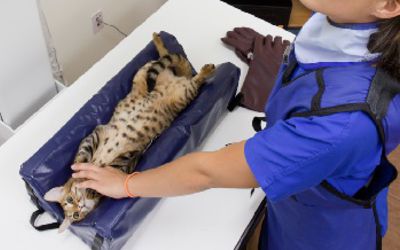
Veterinary radiography has advanced greatly over the years. Modern tools, paired with innovative techniques, ensures that our furry companions receive the superior care available. One key advancement in this realm is the use of vet x-ray positioning aids. This guide dives deep into the realm of x-ray positioning aids, providing you a exhaustive look.
Understanding Vet X-ray Positioning Aids
Before diving into the nitty-gritty, let's first understand the fundamental concept. In essence, x-ray positioning aids aid veterinary professionals obtain the most clear images while guaranteeing minimal discomfort for the animal. They play a essential role in holding pets in the right position, minimising movement, and making certain regular, high-quality results.
Why are X-ray Positioning Aids Vital in Veterinary Practice?
Safety for Both Animal and Technician: Minimising animal movement is essential during x-ray procedures. This not only ensures clear images but also minimises the risk of radiation exposure for both the animal and the technician.
Consistent Image Quality: Steadiness is key when it comes to x-rays. Vet x-ray positioning aids help in achieving that by making sure animals are held in the right posture for clear images.
Reduction in Retakes: If a pet stirs during the x-ray process, the chances are high that the images might emerge unclear. Positioning aids considerably reduce such situations, leading to fewer retakes.
Popular Types of Vet X-ray Positioning Aids
Foam Positioners: These lightweight and long-lasting positioners are ideal for upholding the animal's body parts during radiography. They arrive in various shapes and sizes designed to fit different animals and body parts.
Sandbags: They're exceptional for stabilizing and positioning. Their weight helps stop movement during the x-ray operation.
Tape and Straps: These can be used to bind limbs in place. They're gentle on the skin and can be modified according to the pet's comfort.
Immobilisation Devices: For pets that are notably restless, immobilisation devices can offer a safe way to maintain them still during the x-ray procedure without causing any discomfort.
Selecting the Right X-ray Positioning Aids for Your Veterinary Clinic
With the variety of aids on hand, picking the right one might feel daunting. However, consider the following factors:
Type of Animals Treated: A clinic mainly handling with small pets might have different requirements than one handling with larger animals.
Frequency of Use: Robust positioning aids are a necessity for busy clinics.
Budget: While it's essential not to settle on quality, vet clinics also need to ensure they're making budget-friendly decisions.
Tips for Using Vet X-ray Positioning Aids Successfully
Training is Vital: Make sure that all your staff are properly trained in using the aids. This will ensure the safety and comfort of the animals while securing the best possible x-ray images.
Regular Maintenance: Like all machinery, vet x-ray positioning aids also deteriorate with time. Regularly check for wear and tear and substitute them when required.
Prioritise Comfort: While achieving the perfect image is essential, it's just as essential to ensure the animal's comfort. Always make certain that any restraints or positioners used are not leading to any anguish to the animal.
Vet x-ray positioning aids have revolutionised the field of veterinary radiography. They have not only guaranteed the creation of clear, high-quality images but have also had a major role in enhancing the safety and comfort of the pets experiencing the process. As veterinary professionals, it's our obligation to guarantee we're outfitted with the best tools and knowledge to offer our furry clients the best care available.
If you're searching to enhance your veterinary clinic with the current x-ray positioning aids or want more information about them, visit xray4vets. Jump into a universe of advanced veterinary gear and elevate the care you render to your beloved animal patients.